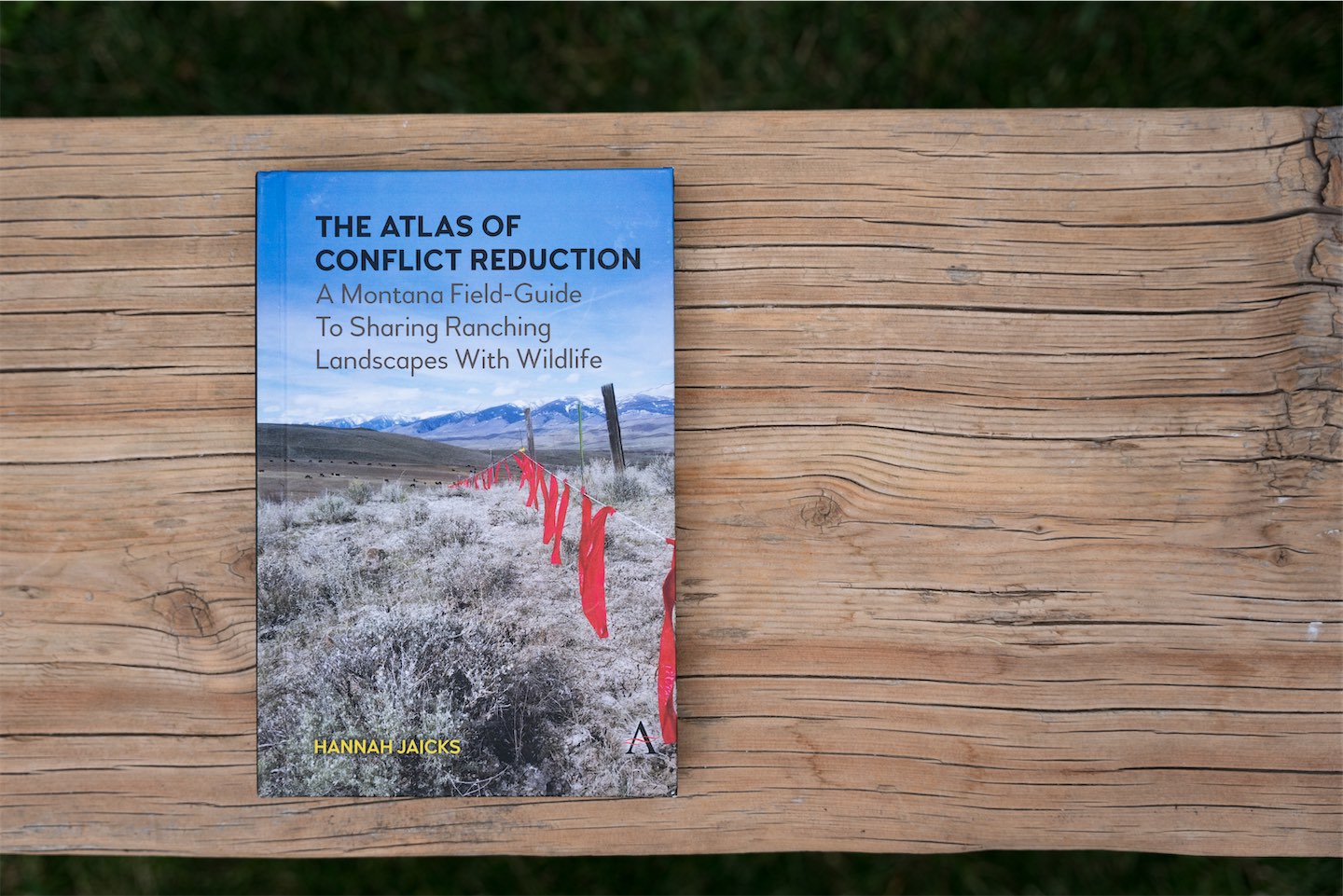Places, Identities and Change
Atlas of Conflict Reduction takes deep look
at how decisions are made on the range
Hannah Jaicks dispels many of our preconceived notions of that mythical character of the American West, the lone cowboy, in her book “The Atlas of Conflict Reduction: A Montana Field-Guide to Sharing Ranching Landscapes with Wildlife” (2022, Anthem Press). As she takes us to a different region of western Montana in each chapter, she shows, through the juicy details of interviews with more than 70 individuals, that community and interconnectedness are just as vital in cowboy culture as self-reliance and independence.
Jaicks’ subjects admit that their culture can make them slow to change. Meanwhile, Jaicks is up front about the fact that her work is about initiating change to achieve shared goals through agreed-upon behavior. Trust, Jaicks points out, is the critical component to navigating such a dialogue. Whether you agree that we should be working toward collective change or not, change is upon us, and “The Atlas of Conflict Reduction” provides new insight into how to work together across our differences.
That insight starts with a foundation of human psychology: People make decisions based “upon a set of values and attitudes and beliefs about how to behave,” she writes. Jaicks, who received her PhD in environmental psychology from the City University of New York but eschews specific labels for the less threatening “interdisciplinary scientist,” applies a consistently psychological approach to the challenge of working wild landscapes. She leads with profound empathy for her ranching community subjects, allowing her to guide us through their stories so that they, and the value they provide to wildlife and healthy ecosystems, can be understood by a broader public.
By combining her psychological approach with the idea of how the physical environment transforms into place — “a physical location granted special meaning,” she brings the concept of “place identity” (“the environmental past of someone”) to the forefront of the discussion. Far too often, these place identities are unspoken undertones in the conversations between ranchers, environmentalists and wildlife managers. Hence why the book is called an atlas: Montana’s places have shaped ranchers, and understanding those places is key to reducing conflict.
In essence, Jaicks writes, “there is not a physical world that is also not social.” In my work with communities facing wildlife challenges around the West, I have found that these psycho-social factors drive the conversation, whether we acknowledge them or not. In too many cases, it is unacknowledged values and place identities that have kept the conversation stuck for decades.
That Jaicks is able to weave all this together with captivating stories of horseback wolf encounters and techniques for deterring grizzly bears is all the more impressive. This keeps the book accessible to a large audience with diverse interests. “The Atlas of Conflict Reduction” is expressly for people aspiring to collaborate on conservation on working lands. It ought to be required reading for anyone seeking to understand a cowboy.





